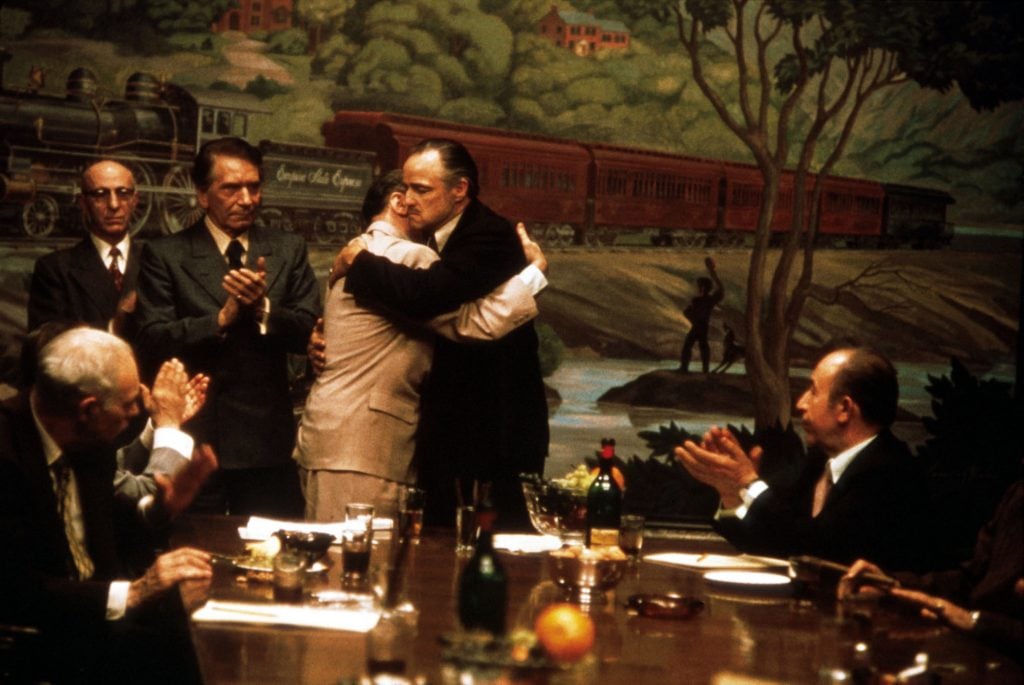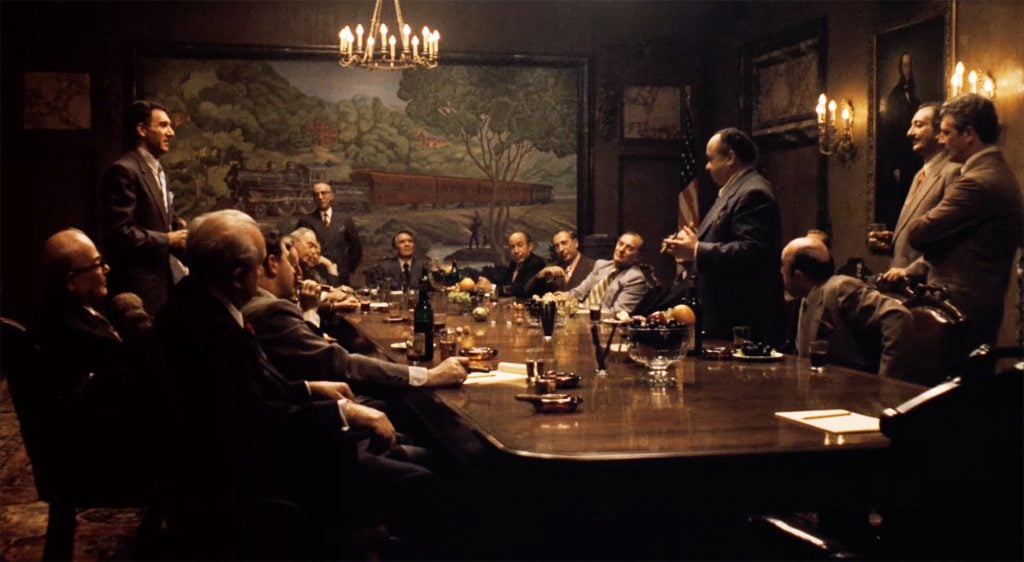Pop Culture
As Seen on ‘The Godfather’: An Enigmatic Painting of a Train
The large canvas provided the backdrop to Vito Corleone’s meeting with the five families.

There is a famous scene in Francis Ford Coppola’s 1972 epic The Godfather where patriarch Vito Corleone (played by Marlon Brando) calls a meeting with the major crime families of New York City. Serving as the backdrop of their tense negotiations is a large painting depicting the NYC #999, a high speed steam locomotive that once connected the heart of the Big Apple to the outskirts of Chicago.
Since its release, the film has become one of the most beloved movies ever made. Coppola fans have analyzed every frame, and the identity of this painting—who made it and what ultimately happened to it—proved to be one of the production’s biggest mysteries.
Few took this mystery as seriously as Howard Kroplick, a New England historian and president of the Long Island Motor Parkway Preservation Society who documented the two-week effort to solve it on his blog. Although Kroplick learned that the scene was shot in a board room on the 32nd floor of the New York Central Railroad building near Times Square, he was unable to discover the painting’s name—only that it had been removed in 2007, when the building was sold to the Helmsley Group.

The train painting seen during the meeting of the five families in The Godfather (1972). Photo: Screen grab.
For a while, Kroplick and others thought the work was painted by Peter Helck, an American illustrator from the 20th century who specialized in drawing cars, trains, and other vehicles. From the way it appeared on screen, the painting seemed to fit his style, and Peter’s grandson Tim Helck, who was contacted for confirmation, said he remembered “hearing a story about my grandfather cutting his hand badly while trimming a train canvas with a razor blade (on the day it was due).”
The Helck hypothesis was disproven when, in 2019, a trustee of the Penn Central Railroad Historical Society discovered the painting was actually made a different artist named Lumen Martin Winter, a graduate from the National Academy of Design in New York who painted murals in schools, post offices, and other public buildings through the Works Progress Administration following the Great Depression.
The unnamed painting was apparently sold in a 2014 auction by the Pennsylvania-based Cordier Auctions & Appraisals. A description of its hitherto enigmatic provenance, shared on the online auction marketplace Invaluable, reveals that it had been painted in 1965.
Despite an estimated value of between $4,000 and $6,000, it was sold for just $1,000—purportedly to a fan of film.
A popular symbol for progress and the passage of time, the painting’s subject served the Godfather‘s key themes, symbolizing Vito’s son Michael replacing his father as head of the Corleone family. But in all likelihood, the painting appears in the film simply because Coppola wanted to use the Central Railroad building’s board room as a setting.
As Seen On explores the paintings and sculptures that have made it to the big and small screens—from a Bond villain’s heisted canvas to the Sopranos’ taste for Renaissance artworks. More than just set decor, these visual works play pivotal roles in on-screen narratives, when not stealing the show.





